 W
WThe States of the Weimar Republic were the first-level administrative divisions and constituent states of the German Reich during the Weimar Republic era. The states were established in 1918 following the German Revolution upon the conclusion of World War I, and based on the 22 constituent states of the German Empire that abolished their local monarchies. The new states continued as republics alongside the three pre-existing city-states within the new Weimar Republic, adopting the titles Freistaat or Volksstaat.
 W
WThe Duchy of Anhalt was a historical German duchy. The duchy was located between the Harz Mountains in the west and the river Elbe and beyond to the Fläming Heath in the east. The territory was once ruled by the House of Ascania, and is now part of the federal state of Saxony-Anhalt.
 W
WThe Free State of Anhalt was formed after Joachim Ernst, Duke of Anhalt abdicated on 12 November 1918, ending the Duchy of Anhalt. It was a state of Germany during the time of the Weimar Republic. In May 1932 the Nazi Party came to power in Anhalt and, after the Nazis attained power at the federal level in 1933, Anhalt was abolished de facto by the federal Nazi government, becoming part of the Gau of Magdeburg-Anhalt.
 W
WThe Republic of Baden was a German state that existed during the time of the Weimar Republic, formed after the abolition of the Grand Duchy of Baden in 1918. It is now part of the modern German state of Baden-Württemberg.
 W
WBavaria, officially the Free State of Bavaria, is a landlocked state of Germany, occupying its southeastern corner. With an area of 70,550.19 square kilometres (27,239.58 sq mi) Bavaria is the largest German state by land area comprising roughly a fifth of the total land area of Germany. With 13 million inhabitants, it is Germany's second-most-populous state after North Rhine-Westphalia, with Bavaria's main cities being Munich, Nuremberg, and Augsburg.
 W
WThe Free State of Bottleneck was a short-lived quasi-state that existed from 10 January 1919 until 25 February 1923. It was formed out of part of the Prussian province of Hesse-Nassau as a consequence of the occupation of the Rhineland following World War I. The Bottleneck is now part of the modern German states of Hesse and Rhineland-Palatinate.
 W
WBremen, officially the Free Hanseatic City of Bremen, is the smallest and least populous of Germany's 16 states. It is informally called Land Bremen, although this is sometimes used in official contexts. The state consists of the city of Bremen as well as the exclave city of Bremerhaven in Northern Germany, surrounded by the larger state of Lower Saxony.
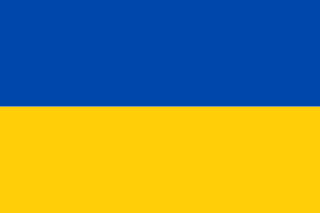 W
WThe Free State of Brunswick was a state of the German Reich in the time of the Weimar Republic. It was formed after the abolition of the Duchy of Brunswick in the course of the German Revolution of 1918–19. Its capital was Braunschweig (Brunswick).
 W
WThe Free State of Coburg emerged from the Duchy of Saxe-Coburg and Gotha at the end of the First World War. It existed from November 1918 until its union with the Free State of Bavaria on 1 July 1920.
 W
WThe Free State of Prussia was a state of Germany from 1918 to 1947.
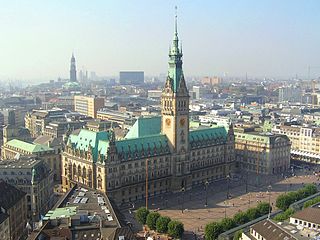 W
WHamburg, officially the Free and Hanseatic City of Hamburg, is the second-largest city in Germany after Berlin and 7th largest city in the European Union with a population of over 1.84 million.
 W
WThe People's State of Hesse was the name of the German state of Hesse-Darmstadt from 1918 until 1945.
 W
WThe Free State of Lippe was a German state formed after the Principality of Lippe was abolished following the German Revolution of 1918.
 W
WThe Free and Hanseatic City of Lübeck was a city-state from 1226 to 1937, in what is now the German states of Schleswig-Holstein and Mecklenburg-Vorpommern.
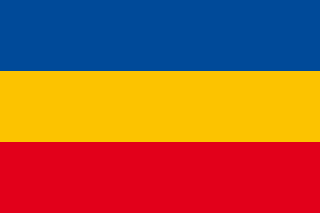 W
WThe Free State of Mecklenburg-Schwerin was a state in the Weimar Republic that was established in 1918 following the abdication of the Grand Duke of Mecklenburg-Schwerin following the German Revolution. In 1933, after the onset of Nazi rule, it was united with the smaller neighbouring state of Mecklenburg-Strelitz to form the united state of Mecklenburg on December 31, 1933.
 W
WThe Free State of Mecklenburg-Strelitz was a state of the Weimar Republic established in 1918 following the German Revolution which had overthrown the Grand Duchy of Mecklenburg-Strelitz. The state lasted until the Nazi Party (NSDAP) came to power in Germany and merged the state with the neighbouring Free State of Mecklenburg-Schwerin to form a new united state of Mecklenburg on December 31, 1933.
 W
WThe Free State of Oldenburg was a federated state of the Weimar Republic. It was established in 1918 following the abdication of the Grand Duke Frederick Augustus II following the German Revolution.
 W
WSaxe-Altenburg was one of the Saxon duchies held by the Ernestine branch of the House of Wettin in present-day Thuringia. It was one of the smallest of the German states with an area of 1323 square kilometers and a population of 207,000 (1905) of whom about one fifth resided in the capital, Altenburg. The territory of the duchy consisted of two non-contiguous territories separated by land belonging to the Principality of Reuss. Its economy was based on agriculture, forestry, and small industry. The state had a constitutional monarchical form of government with a parliament composed of thirty members chosen by male taxpayers over 25 years of age.
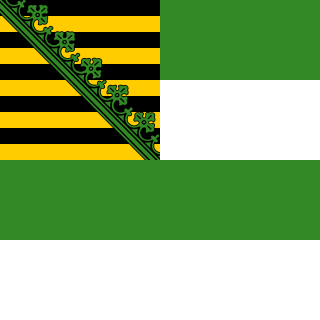 W
WSaxe-Meiningen was one of the Saxon duchies held by the Ernestine line of the Wettin dynasty, located in the southwest of the present-day German state of Thuringia.
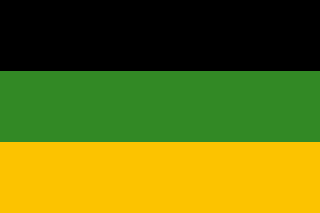 W
WSaxe-Weimar-Eisenach was created as a duchy in 1809 by the merger of the Ernestine duchies of Saxe-Weimar and Saxe-Eisenach, which had been in personal union since 1741. It was raised to a grand duchy in 1815 by resolution of the Vienna Congress. In 1903, it officially changed its name to the Grand Duchy of Saxony, but this name was rarely used. The Grand Duchy came to an end in the German Revolution of 1918–19 with the other monarchies of the German Empire. It was succeeded by the Free State of Saxe-Weimar-Eisenach, which was merged into the new state of Thuringia two years later.
 W
WSaxony, officially the Free State of Saxony, is a landlocked state of Germany, bordering the states of Brandenburg, Saxony-Anhalt, Thuringia, Bavaria, as well as the countries of Poland and the Czech Republic. Its capital is Dresden, and its largest city is Leipzig. Saxony is the tenth largest of Germany's sixteen states, with an area of 18,413 square kilometres (7,109 sq mi), and the sixth most populous, with more than 4 million inhabitants.
 W
WThe Free State of Schaumburg-Lippe was created following the abdication of Prince Adolf II of Schaumburg-Lippe on 15 November 1918. It was a state in Germany during the Weimar Republic, headed by a Minister President. The democratic government was suppressed during Nazi rule. At the end of World War II the British military occupation government decreed on 1 November 1946 the union of Schaumburg-Lippe, Hannover, Braunschweig, and Oldenburg to form the new state of Lower Saxony.
 W
WSchwarzburg-Rudolstadt was a small historic state in present-day Thuringia, Germany, with its capital at Rudolstadt.
 W
WThuringia, officially the Free State of Thuringia, is a state of Germany. In central Germany, it covers 16,171 square kilometres (6,244 sq mi), being the sixth smallest of the sixteen German States. It has a population of about 2.15 million inhabitants.
 W
WThe Free State of Waldeck-Pyrmont, later the Free State of Waldeck, was a constituent state of the Weimar Republic. It was created following the German Revolution which forced Prince Friedrich of Waldeck and Pyrmont along with the other German monarchs to abdicate.
 W
WThe Free People's State of Württemberg was a state in Württemberg, Germany, during the Weimar Republic and Nazi Germany.
 W
W